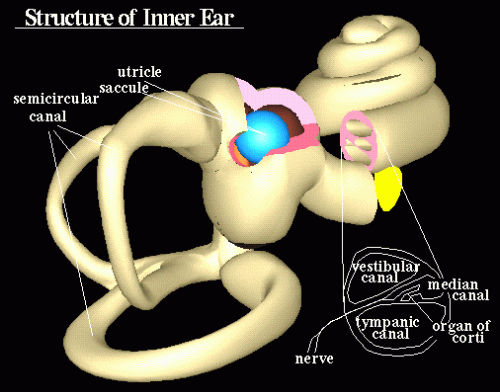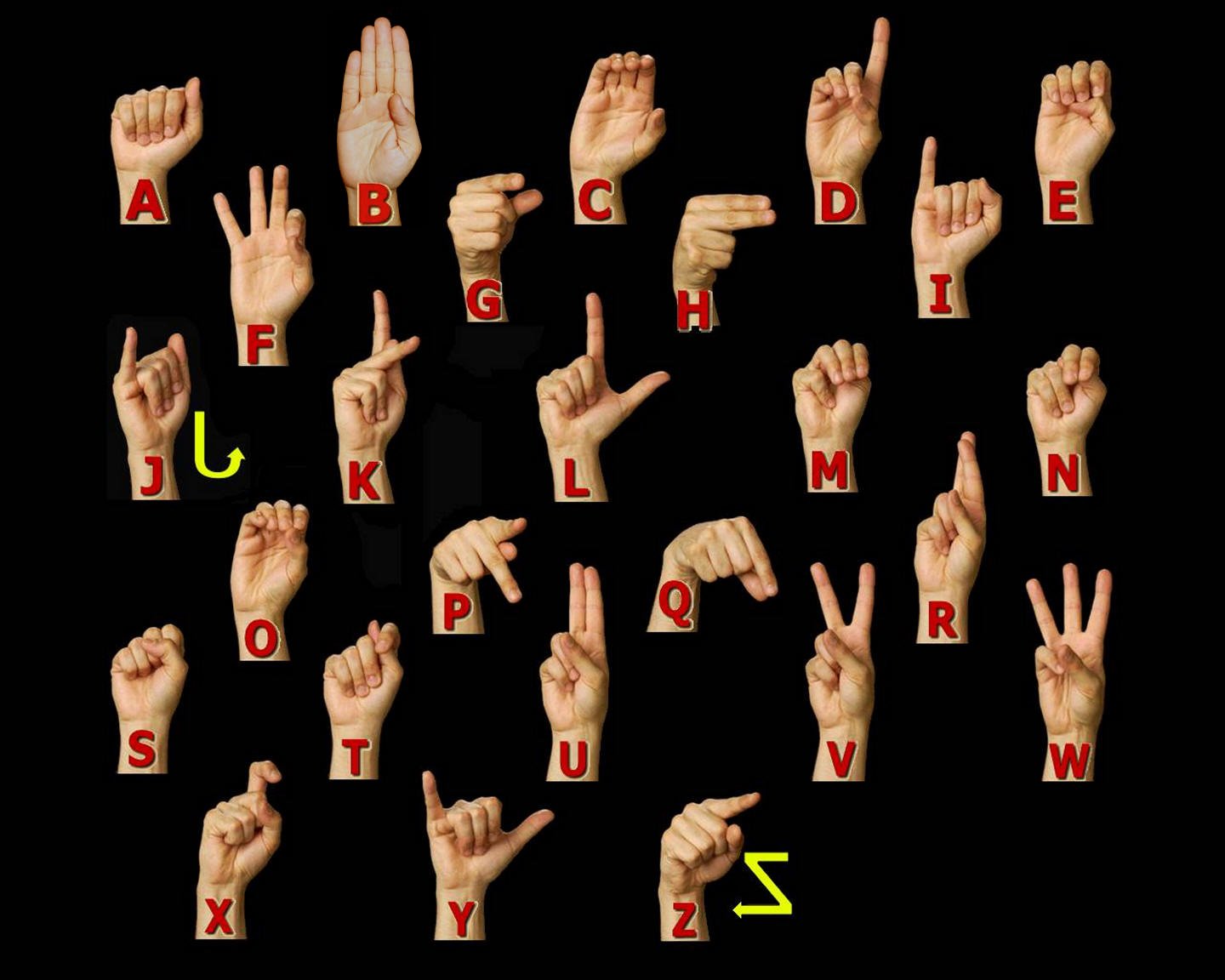How do you hear sounds, though? I mean, there has to be something other than getting the sound waves. It obviously has to do with the ear, and it must have some sort of process, right? And again, sound is something we all take for granted, so we ususally don't think about the whole process of it all, but it is interesting. Now, when you drop a phone book, you hear a thump! When you press the middle of a car wheel, you hear different kinds of horns: an uuuuurrrrrrr, an eeeeeeep, an brrrrraaaa and others. (Don't insult my skills; it's not easy describing car horns.) And when people open their mouths, you hear words. What you're hearing are sound waves.
Sound waves are a vibration in the air around you. When something causes a disturbance, then the waves travel away from the disturbance, kinda like the ripples in a lake. Sound waves travel slower than light, but still pretty darn fast...at about 1,200 kilometers per hour. Cool, eh? Now, let's go to the ears. Here's what your head would look like if your body was see-through:

Your ear is divided into three parts: the outer ear, the middle ear, and the inner ear. The outer ear is the only part of the ear that you can see (without machinery, of course). It's made of cartilage, something that's kind of rubbery. The little ridges of the cartilage help bounce sound waves to your middle ear. The pinna, the felshy part of the ear, collects the sound.
FUN FACT: Because your ear is made of cartilage, not bone, when you see a skull, that's why there's no ears or nose.
The sound waves travel through your ear canal and hit your eardrum, or your tympanic mambrane. The eardrum vibrates, almost like a real drum, causing the sound to amplify. The ear, actually, holds the three smallest bones in your body: the hammer, the anvil, and the stirrup. Not very imaginitive names, considering they're already used, but there's good reason for that. Okay, so the eardrums vibrations are sent to the hammer, which then moves back and forth really fast. The hammer hits the anvil, which sends its vibrations to the stirrup, which creates vibrations in the inner ear. It actually in the middle ear where sound energy is converted to mechanical energy.
FUN FACT AGAIN: Babies can get earaches because of milk backing up the Eustachian tube, which causes bad bacteria to grow, and may cause awful hearing problems later in their life.
The inner ear is covered with tiny hair-like particles, that, once damaged, can't be replaced. That's why you shouldn't put your music too high *coughKatiecough*. Anyway, the inner ear is sort of like a labyrinth. The vestibule and semicircular canals help with balance, and the cochlea helps you hear. The cochlea is like a seashell, almost, because it twirls. The cochlea transforms the vibration into electrical impulses, and then sends it to the brain, which then turns the signals into sound. That's what you hear.


This all happens in less than a second. And that, people, is how you hear!
However, if anything goes wrong---like if the hammer doesn't move back and forth, or the sound waves can't get to the eardrum, or the eardrum doesn't vibrate---then deafness can happen. Hearing is depends on a complex cycle of events. It's like building a pyramid out of cards. If you pull something out, the whole thing collapses. Even if you take something from the top, it's not a pyramid anymore, and therefore, it can't be called one.
You may know this already, but deaf people use their own language, sign language. That's used with the hands, so they can communicate with other people. You may ask, why don't some use their voices? Surely they still work; I mean, it's just their ears that don't. Well, it's usually people that have been deaf since before or around the time they begin to learn to speak. They usually rely on visual methods of speech and have to go through speech therapy. While the vocal cords of those people are perfectly fine, it's a lot harder to speak correctly when you can't exactly hear yourself. It's sort of like if you have an iPod, and you can sing relatively well, but when you're singing with both headphones plugged in, then you're singing totally off-key. There's many other reasons, but this is about hearing, not speech. When we get into speech, I'll explain it.

ANOTHER FUN FACT: kid can hear sound better than adults.
The Range of Pressure That Can Be Heard By An Undamaged Ear | ||
| The ear is able of hearing a large amount of sounds. "The ratio of the sound pressure of the lowest limit that undamaged ears can hear to that of sounds that can cause permanent damage is more than a million. The decibel scale is logarithmic; it can be used to describe very large ratios." | ||
| Decibels | Micropascals | Typical Perception |
| 0 dB | 20µPa | The quietest sound an 18 year-old healthy ear can hear |
| 20 dB | 200µPa | A very soft whisper |
| 45 dB | 300 - 800 µPa | A softly spoken voice |
| 60 dB | 5,000 µPa | An average spoken voice |
| 70 dB | 20,000 µPa | A shout |
| 80 dB | 100,000 µPa | A noisy motorcycle on a narrow street |
| 90 dB | 500,000 µPa | Jackhammers within 50 feet |
| 100-120 dB | 5.000.000 µPa | A heavy metal rock concert |
| 120 - 140 dB | 20,000,000 µPa | The noise of a jet engine within 250 yds. |
| Hearing Loss | Need for a hearing Aid |
| Mild (cannot hear below 45dB) - soft sounds may be difficult to distinguish. | None |
| Moderate (cannot hear below 60dB) - conversational speech is hard to hear, especially if there is background noise (such as a television or radio). | Yes- Our hearing aids are excellent for helping you if you have this range of hearing loss, especially if you cannot hear in the 55-60DB range |
| Moderately severe (cannot hear below 75dB) - it is very difficult to hear ordinary speech. | Yes- Our hearing aids are excellent for helping you if you have this range of hearing loss. |
| Severe (cannot hear 76-90dB) - conversational speech can't be heard. | Yes- However, our hearing aids cannot help you if the hearing loss is this severe. You will need to see an audiologist. |
| Profound (cannot hear 91dB+) - almost all sounds are inaudible. Most people with profound hearing loss benefit from a hearing aid, while some don't. | Yes- However, our hearing aids cannot help you if the hearing loss is this severe. You will need to see an audiologist. |
I got both of the charts above from http://www.hearingcentral.com/howtheearworks.asp Link below.
And that's all for today. Sorry for it not being as informative, but there's not really much else to do with how you hear, is there? Sorry. Anyway, as always, my classmates' blogs are always open for more information, and I'll put some links up in case you want to learn more. This includes the link where I got the chart, which is the best one I found. So, thanks for reading!









No comments:
Post a Comment